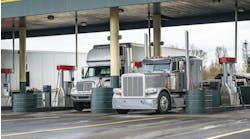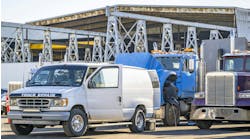We’ve been on a wild ride these last several years, including dealing with a pandemic, seeing seismic shifts in purchasing behavior, and navigating supply chain disruptions of epic proportions.
As we enter fall, I am sure all of us are wondering what the new year is going to bring for the trucking industry. Speaking at the recent NationaLease Annual Meeting, Sean Storey, VP of capital equipment at NationaLease, offered his thoughts on the subject saying that 2023 is going to be very similar to 2022. He expects continued OEM allocations, supply chain disruptions, price increases, and surcharges.
See also: Topsy-turvy times for used trucks
OEMs are on the record saying that once again allocations will be the order of the day as material shortages continue. No one knows for sure how that will play out, but it is likely that no one will get all the trucks they order and that the industry will once again be forced to continue to operate trucks past their normal trade cycles.
Speaking at the same event, Rob Garcia, SVP of supply management at NationaLease, said he expects to see inflation continue, led by energy markets, rate elements, commodities, production constraints, reliance on imports and investment speculation.
He also said that short- to medium-term logistics constraints, including port delays, foreign currency stability, labor health concerns, volatile demand, and inventory backlogs will contribute to product and component shortages.
Garcia said fleets need to preserve their existing vehicles since there is a big question about how many—if any—new vehicles they will be getting in 2023. And since component shortages will continue to impact replacement parts, he suggested that fleets establish program enrollments with multiple suppliers, especially for core products.
While all this is going on, fleets are dealing with decisions about whether they should invest in zero-emissions vehicles. There is a lot of hype surrounding this subject, and fleets need to try to separate the facts from the marketing promotion. Storey said it could take a minimum of one year to get an EV charging infrastructure in place, and fleets need to make decisions about where alternative fueled vehicles will be domiciled to ensure charging or fueling options are available.
In the future, zero-emission vehicles will be part of all fleets, according to Storey. So, it is important that fleets invest in training technicians so they can work on this new equipment. They can also tap their outsourced maintenance vendors who have qualified technicians and dedicated shop space to perform maintenance and repairs.
Jane Clark is vice president of member services for NationaLease. In this position, she is focused on managing the member services operation, as well as working to strengthen member relationships, reduce member costs, and improve collaboration within the NationaLease supporting groups. Prior to joining NationaLease, Jane served as Area Vice President for Randstad, one of the nation’s largest recruitment agencies, and before that, she served in management posts with QPS Companies, Pro Staff, and Manpower, Inc.



